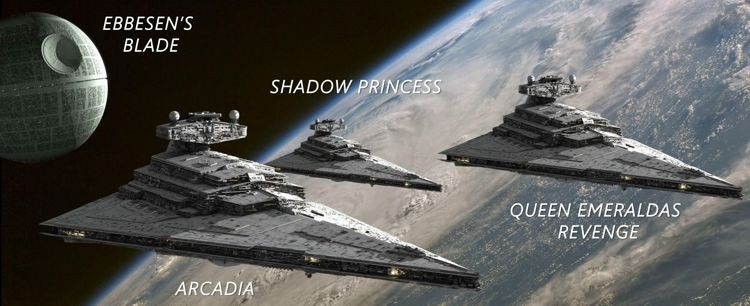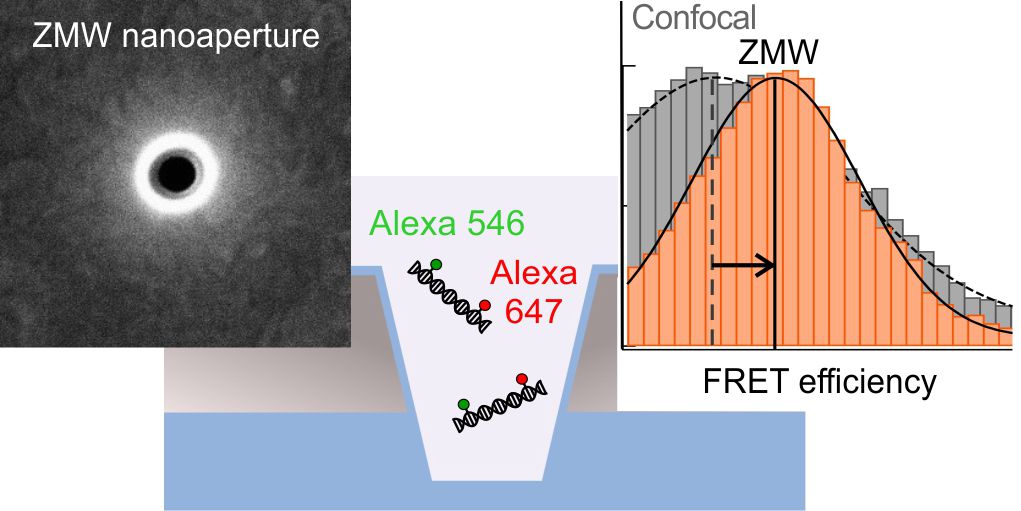Zero-mode waveguides can be made better with optimized rectangle shapes
Zero-mode waveguide metal nanoapertures are receiving a large interest owing to their ability to confine light at the nanoscale and enhance the fluorescence emission from single molecules. However, the interest for more advanced geometries beyond the vanilla circular shape remains badly understood.
In a recent publication in Nanoscale Advances, introduce a rational design for rectangular nanoapertures, and demonstrate how this optimized shape outperforms the classical circular zero-mode waveguides both in the visible and in the deep UV.
Significance:
- Rectangular nanoapertures provide 50% brighter photon count rates together with shorter lifetimes as compared to their circular counterparts.
- We derive clear design parameters related to physical concepts.
- We achieve the highest fluorescence enhancement reported so far for deep UV plasmonics.
All our papers are freely available on either HAL or ArXiv repositories, check our publication page for direct free (legal!) links. For this one: HAL 02942985
/image%2F1383851%2F20200923%2Fob_071485_figtocnr.jpg)
Nanoscale control of smFRET by a scanning photonic nanoantenna
Förster Resonance Energy Transfer (FRET) governs energy exchanges at the nanoscale and can be used to accurately measure intra- and inter-molecular distances with sub-nm accuracy. While photonic nanoantennas have been shown to modify FRET, most of the earlier experiments lacked the ability to manipulate the distance between the antenna and the emitters.
In a collaboration with ICFO and INSP, scanning optical antenna probes are used to directly modulate the FRET efficiency in the near-field, and image the FRET efficiencies distributions at the nanoscale. The results, published in Nanophotonics, show that the antenna creates a local perturbation competing with the FRET acceptor, which is imaged for the first time at the single molecule level as a function of the relative position between the antenna and the FRET donor-acceptor pair.
/image%2F1383851%2F20200909%2Fob_c8c344_forblog.jpg)
Nanophotonics to enhance smFRET: seminar video
Still not as famous on youtube as our esteemed colleague from Marseille, but going on the dark path ![]()
The Armada is on fly again
Soon our flag will flutter again over the Sea of Nanos.
Wed. May 13th 2pm CEST: Ebbesen's Blade is on fly again.
Thu. May 14th 3pm CEST: Shadow Princess took off and is fully operational.
Fri. May 15th 12am CEST: Arcadia hashin!
Thu. May 28th 4pm CEST: Queen Emeraldas Revenge is on fly. All our microscope setups are back and operational.



Link to some well-documented articles about Captain Harlock
Long-Range Single-Molecule Förster Resonance Energy Transfer between Alexa Dyes in Zero-Mode Waveguides
Förster resonance energy transfer (FRET) is widely used as a molecular ruler to monitor biomolecular conformations and interactions dynamics, but FRET is generally limited to distances below 10 nm.
Last year, we showed that zero-mode waveguides (ZMW) nanoapertures can enable single molecule FRET detection at spatial distances exceeding 10 nm with higher FRET efficiencies. However, this earlier work was limited to a specific Atto 550 – Atto 647N fluorescent dye pair, rising the issue that observations of FRET enhancement could be an artefact related to this specific set of fluorescent dyes.
In a recent ACS Omega paper, we use a markedly different set of fluorescent dyes (Alexa Fluor 546 and Alexa Fluor 647). Our new single molecule FRET data quantitatively demonstrate enhanced FRET efficiencies at large separations exceeding 10 nm confirming our earlier conclusions.
Significance:
- The FRET enhancement inside a ZMW does not depend on the set of fluorescent dyes, validating the ZMW approach.
- Nanoapertures and nanophotonics are demonstrated to extend the spatial range of FRET to distances where dipole-dipole interactions would otherwise be too weak to produce detectable FRET signals.
Also available on ArXiv 2004.04513




